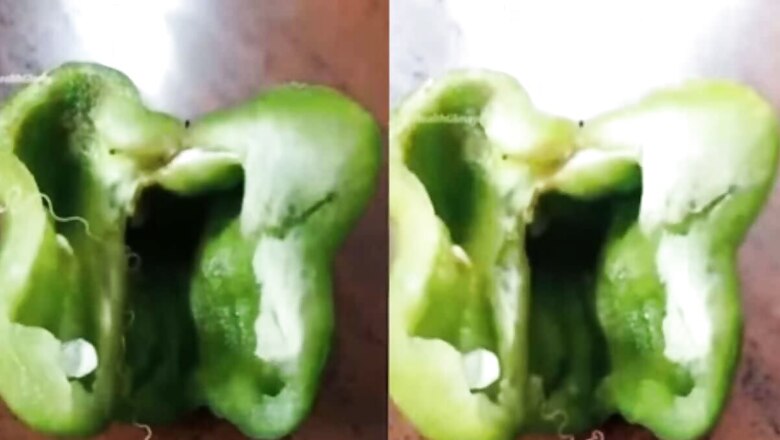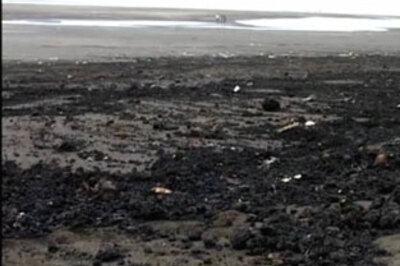
views
Capsicum is one of the most important vegetables that heighten the taste of any dish. Most of the fast foods require capsicum as the primary ingredient. It is rich in phytochemicals like vitamins, anthocyanins, flavonoids, phenolic acid, capsaicinoids and carotenoids. Despite these nutritional compositions, how will you feel if you discover a worm in the capsicum? A video is going viral where a threadworm was curving out of the capsicum after being cut in half. Netizens were shocked to see the threadworm residing inside the capsicum. Many shared that they use capsicum every alternate day and will now be careful while cutting them.
In the viral video, a woman cuts the capsicum from the middle. After slicing it in half, a thread-like material matching the colour of the insides of capsicum was seen. Initially, it appeared to be the inner part of the capsicum but the netizens were startled when the thread started moving on its own. It was almost one finger long. The video claims that It is a threadworm, a type of parasitic worm that infects the large intestine of humans. “Be careful before eating capsicum” wrote Krishna Vallabhi who goes by the name of Krishna Preeti on the social media platform X (formerly called Twitter). She shared the video which has now been viewed by one million users. Take a look at the post,
शिमला मिर्च खाने से पहले सावधान रहें.. pic.twitter.com/LCgRRivfAK— ???????????????????????????????????????????????????? (@Krishnavallabhi) May 28, 2024
Netizens Goes OMG!
The people were shocked to watch threadworm lurking in the insides of a well-looking capsicum. People said that they did not know anything like this before, while many users also raised the question of whether do these insects not die while cooking the capsicum at high temperatures.
शिमला मिर्च खाने से पहले सावधान रहें.. pic.twitter.com/LCgRRivfAK— ???????????????????????????????????????????????????? (@Krishnavallabhi) May 28, 2024
My favourite veggie hai almost alternate days using it Never seen like this Have tb very careful ????— Nandini Idnani ???????????? (@nandiniidnani69) May 28, 2024
Netizens believed that worms of larvae can sometimes be found inside fruits and vegetables including yellow peppers due to the eggs of insects being laid on the surface of produce. These eggs then hatch into larvae which can bore into the fruit or vegetables as they feed, creating tunnels and causing damage.


















Comments
0 comment